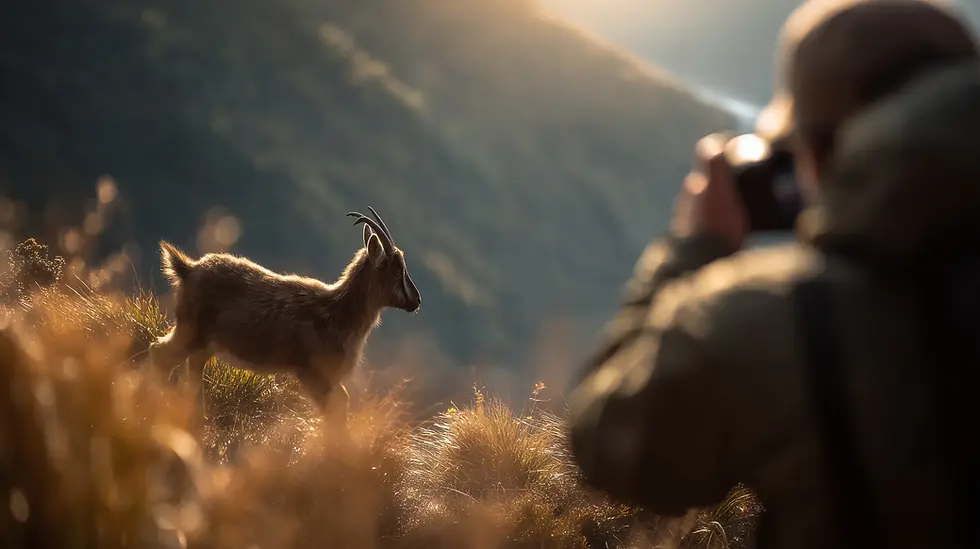Mapping and Monitoring New Habitats for Endangered Species
- Avant

- Jul 10
- 3 min read
TL;DR
High-resolution hyperspectral imaging pinpoints ideal release sites by revealing plant health, moisture and soil characteristics.
Complementary data (radar, lidar, climate records, citizen-science observations) refine habitat choice and track ongoing changes.
Forecasts of food-plant yields and real-time monitoring via a “digital twin” ensure sustainable resource availability and adaptive management.

Reintroducing an endangered species into the wild involves more than logistics -it demands precise habitat insight and continuous care. Modern satellites, especially hyperspectral sensors, let us see vegetation health, water availability and soil traits at scales once reserved for ground surveys.
Combining this with radar, lidar, ground sensors and open-access databases, conservation teams can both select prime release sites and watch how those environments evolve under new occupants.
Hyperspectral Imaging for Habitat Assessment
Hyperspectral sensors capture hundreds of narrow spectral bands across visible and infrared light. This spectral richness reveals:
Vegetation health: Indicators of chlorophyll levels and plant stress.
Moisture distribution: Canopy and soil water content.
Soil composition: Mineral signatures affecting burrowing or nutrient cycles.
How it works in practice:
Acquire imagery during peak growth with satellites such as EnMAP or PRISMA.
Correct data for atmospheric effects to derive true surface reflectance.
Generate thematic maps of vegetation vigour, moisture and soil type.
Validate in the field to ensure remote-sensing layers match real-world conditions.
These maps highlight zones rich in the plant communities critical for the species’ diet and shelter, narrowing down vast landscapes to a handful of priority areas.

Forecasting and Monitoring Food-Source Yields
Once potential habitats are identified, we layer in productivity forecasts and ongoing checks to confirm that food plants will sustain a growing population:
Yield Predictions:
Combine vegetation-health maps from hyperspectral data with historical climate normals (rainfall and temperature trends) to model seasonal biomass production.
Identify areas likely to produce dense forage at key times of year.
Resilience Assessment:
Overlay soil-moisture outputs (from satellite missions or local probes) and flood-risk layers (from radar) to ensure plants remain accessible during droughts or heavy rains.
Real-Time Monitoring:
Regular satellite revisits (multispectral weekly, hyperspectral fortnightly) detect declines in plant health or shifts in moisture.
Ground sensors track soil moisture and microclimate variations, while acoustic or camera traps confirm animal foraging patterns.
This complementary process ensures chosen sites not only start productive but stay productive, and flags emerging concerns—such as over-grazing or water stress—so managers can respond promptly.
Complementary Remote-Sensing Techniques
Some of the additional data sources that you would first incorporate, to start building an understanding of the whole environment and its impacts.
Synthetic Aperture Radar (SAR): Penetrates cloud cover to map surface moisture and texture, revealing wetlands and flood margins.
LiDAR: Produces detailed models of terrain and canopy structure, showing shelter availability and movement corridors.
High-Frequency Multispectral Data: From satellites like Sentinel-2, provides rapid insights into seasonal changes and disturbance events.
Fusing these sources in a GIS creates composite suitability maps that balance forage availability, shelter, water access and landscape connectivity.

Incorporating Environmental and Biodiversity Records
Remote sensing gains depth when paired with:
Climate Normals: Long-term averages of temperature and rainfall guide expectations for growing seasons.
Soil-Moisture Data: Ground probes or down-scaled satellite outputs reveal sub-surface water reserves.
Species Sighting Databases: Citizen-science and government records show predator presence, competing species and human activities.
Overlaying these layers refines site selection, ensuring spectral indicators match ecological realities on the ground.
Constructing a Dynamic Digital Twin
A digital twin is a live, virtual mirror of the release area that integrates all data streams and supports adaptive management:
Data Streams
Satellite revisits (hyperspectral and multispectral)
Soil-moisture and microclimate sensors
Camera traps and acoustic monitors
Analytical Engine
Automated routines flag declines in vegetation vigour or moisture outside normal ranges.
Hydrological models simulate water movement and groundwater shifts.
Spatial simulations predict animal movement and habitat use.
User Interface
A web dashboard displays interactive maps, time-series charts and alerts when key indicators breach thresholds.
Notifications prompt field teams to check on emerging issues—whether water shortages, over-foraging or predator incursions.
This integrated platform links real-time ecosystem feedback to practical interventions, such as supplementary feeding, temporary fencing or habitat restoration.
Technical Considerations
Bringing this approach to life requires:
Robust Data Management: Hyperspectral and lidar files are large; reliable cloud-computing and streamlined workflows are essential.
Interdisciplinary Collaboration: Ecologists, remote-sensing experts, data scientists and field biologists must work in concert.
Ground-Truth Infrastructure: Permanent monitoring plots and sensor calibration need careful design and upkeep.
Resource Commitment: While much data is free to access, sensor networks and analytics platforms involve upfront investment.
Avant partners with New Zealand's top University Hyperspectral units, as well as the world leading satellite and imaging data suppliers.




Comments